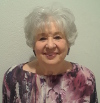The First Fifty Years of the WBF (Part II)
It begins with the year 1958 and continues with European bridge history. Most enthralling to me were the brief sketches of the following early bridge historians accompanied by their photos and brief intriguing squibs or biographies engulfed in a prominent light green background:
It begins with Harold S. Vanderbilt, a renowned yachtsman but more highly recognized as the inventor of modern Contract Bridge; Baron Robert de Nexon (a French perfume company president although better known as one of the founders of the WBF); Alfred Greunther (Nato’s Supreme Commander and sometime bridge partner of President Eisenhower); Alvin Landy, a founding member of the WBF; British Bridge Administrator Geoffrey Butler whom, together with Charlie Solomon, prepared the groundwork for the formation of the WBF, full page biographies of both Albert Morehead (a genius whose list of vocations was a yard long: book editor, magazine writer, games authority, author, tunesmith, newspaper columnist, lexicographer, businessman, translator, amateur criminologist and a half dozen other lesser things besides), and Charles Goren, Mr. Bridge himself with his countless accomplishments in publicizing the game; Waldemar von Zedtwitz, a linguist and lexicographer by profession who helped save the ACBL in 1948; Charles J. Solomon (a close personal friend of Norman and mine) who helped found the WBF plus numerous other contributions; bridge columnist and player B, Jay Becker whose career spanned 55 years; Count Carl Bonde from Sweden who served as President of the Swedish Bridge Federation, President of the European Bridge League and eventually President OF THE WBF; Andre LeMaitre, from Belgium who acted as President of the EBL and Secretary of the WBF; Julius Rosenblum, an ultra-successful businessman from New Orleans, who participated in multiple capacities, including WBF President; Swedish Nils Jensen who was known primarily for organizing the 1970 Bermuda Bowl and World Pairs Olympiad in Stockholm, the 1974 World Pairs Olympiad in Las Palmas and the 1983 Bermuda Bowl in Stockholm;
Between the photographic tributes a page is dedicated to the members of the WBF Committee of Honor (as of 2008):
Chairman Jaime Ortiz-Patino (Switzerland); Jean-Claude Beineix (France); Jose Damiani (France); Ernesto D’Orsi (Brazil); Joan Gerard (USA); Panos Gerontopoulos (Greece); Mazhar Jafri (Pakistan); George Retek (Canada); Gianarrigo Rona (Italy); John Wignall (New Zealand) and none other than Bobby Wolff (USA).
The photographic tributes continue with Alfred (Freddy) Sheinwold from Los Angeles (but born in London) one of the most successful player-writer personalities who wrote 13 books. He also was Editor of The Bridge World, Editor of the ACBL Bulletin and for a year Bridge Editor of The Los Angeles Times and was co-inventor of the Kaplan-Sheinwold System. Other photographic tributes were Jaime Ortiz-Patino, who served in countless capacities and was one of the most famous promoters of the WBF and World Bridge. Patino (known as the Godfather of the WBF) was followed by Josephine Culbertson (wife of Ely) “However, she stood in her own right as a renowned bridge teacher, player and writer.” Edgar Kaplan (my late husband Norman Kay’s partner for about 43 years until Edgar’s death in 1997) was a “true virtuoso and widely recognized as the world’s most complete authority on bridge in all its aspects, having firmly established himself as a player, writer, analyst, commentator and administrator and was co-inventor of the Kaplan-Sheinwold system.” Next in line was Robert Howes, an attorney and close friend of Jimmy Patino who served the WBF in many indispensable legal and advisory capacities.
Very delicate reference was made to the invention of the screens, the English Scandal, the Foot Soldiers, the Blue Team, the Burgay Tapes and other much talked about suspected questionable ethical situations. You will have to read it for yourselves to judge what the writer was saying.
I am only up to page 97 of the 231 page book, but it is an education in itself for serious and curious bridge lovers.
To be continued ….



I understand this book was five or six years in the writing. No wonder! From your reporting, it covers so much ground. I will be looking forward to reading it in detail when it becomes available on the market.
The names read like a Who’s Who — but the one I knew least about (who was ultra talented was Albert Morehead). I remember Alan Truscott replacing him as Editor of the New York Times, but I had no clue just how well-rounded and apparently brilliant Morehead was.
CP:
I, too, was in the dark about Mr. Morehead’s talents. I don’t recall ever meeting him. I think the closest I ever came was when he and Loy (his wife) were invited to Norman’s and my wedding but they never showed. We found out belatedly he had sudden emergency dental work and was incapacitated. That was in 1963 (almost 50 years ago). Funny the things that one remembers.
Judy
Unfortunately, the book seems to be out of print.
Earlier, your husband said Jaime’s book would expose the truth about the Burgay tapes and other scandals.
Now, you comment that, in the book, “very delicate reference was made to the invention of the screens, the English Scandal, the Foot Soldiers, the Blue Team, the Burgay Tapes and other much talked about suspected questionable ethical situations. You will have to read it for yourselves to judge what the writer was saying.”
Will authenticated facts be forthcoming from another source?